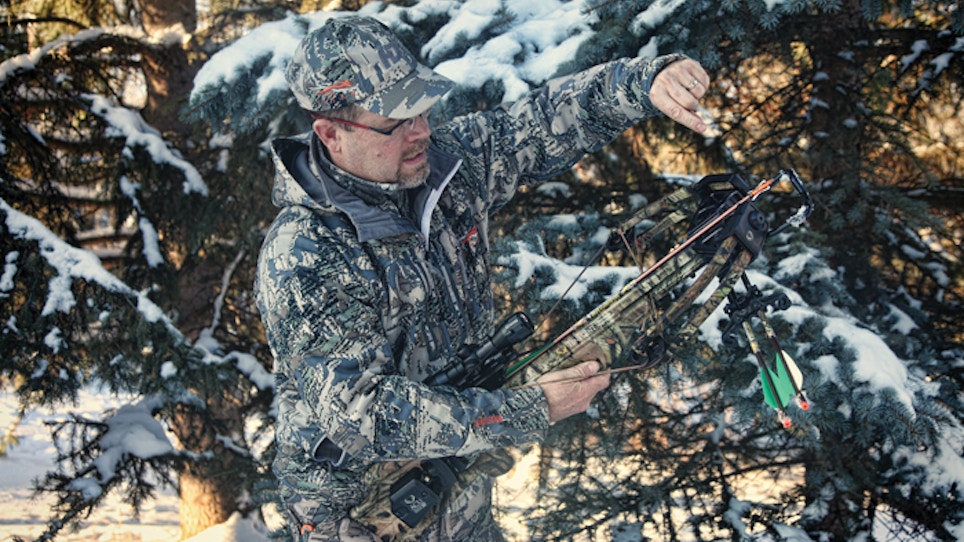I screwed my broadhead onto the arrow and snugged the threads tight. Placing the arrow on the rail of my crossbow I slid the nock into place – back into the receiver – until it activated the trigger. I lined up on the 3-D decoy, gently squeezed the trigger and watched my arrow fly with perfection into the kill zone. The arrow impacted the target exactly where it had been aimed, which is what I want and expect in a hunting situation. The accuracy achieved had a lot to do with the bolt I chose to launch from my horizontal weapon.
Crossbows have been around since the fourth century. By the time the fifth century rolled around, China had already developed bronze bolts. Why? They wanted a more accurate and more deadly projectile. Looking in the history books, it’s easy to see why these projectiles were called bolts. They had to be extremely strong to withstand the catapult-type bows used to fire them. The bronze arrows would have the weight to fly far and straight with deadly results.
Modern crossbows shoot arrows, which are constructed in the same manner, and with the same materials as arrows used with vertical bows. They look a tad different, as they need to fit on the rail of a crossbow with a specific power stroke, which is comparable to draw length on a vertical bow.
Modern crossbow manufacturers have developed new technologies and advancements for speed, accuracy and consistency, with some horizontal models exceeding 400 fps. In order to harness the energy of modern crossbows, shooters need to pay close attention to the arrows they select to take full advantage of the benefits in a safe manner.
Most of us have folded paper airplanes at some point in our life. The goal of this technical paper folding is to create the perfect balance needed to generate a long, smooth flight. The structure of the plane requires a delicate balance, which can be compared to arrow flight. A lightweight paper plane can’t be thrown hard, as it will spin out of control. If we make longer planes and add some weight to the nose, the planes fly straight and far when thrown hard.
With the energy of modern crossbows producing speeds between 325 and 400 fps, users require an arrow with enough spine to prevent them from exploding when transferring the energy released through the bow and string. Static spine is the stiffness of the arrow and its resistance to bending. The factor which determines the spine is the stiffness of the materials in the shaft as well as the geometry of the shaft itself. In multi-layered arrows, like carbon and aluminum, the bonding materials of the layers also contribute to the overall stiffness.
How much the arrow bends or flexes when fired is known as dynamic spine. This is influenced by factors such as static spine, string force, fletching and nock weight. The flexing and bending of an arrow during flight will influence accuracy and consistency, so it’s important that dynamic spine is controlled.
The three most important factors when selecting a crossbow arrow are weight of the complete bolt, length of the bolt and the type of nock. All crossbow manufacturers list a minimum bolt weight and length and specify the type of nock that should be used. Choosing the incorrect arrow or nock can damage the crossbow and injure the shooter.
The total arrow weight is the combined mass of the bolt, nock, insert, vanes, and either a field point or broadhead. Most arrow manufacturers list the weight in grains per inch of shaft. To figure total mass arrow weight, multiply the bolt length times the grains per inch. A 20-inch bolt that weighs 13 grains per inch would have the following weight calculation: 20 inches x 13 grains/inch = 260 grains. Now add the weight of the nock, fletching, insert and point. For example: nock is 15 grains, fletch is 12 grains each for a total of 36 grains, insert is 90 grains and point is 100 grains (260+15+36+90+100 = 501 grains).
Nocks are rarely interchangeable between different crossbows. All crossbow manufacturers recommend a specific style of nock, and not using the right one can cause the string to jump the arrow, resulting in a dry-fire. You don’t want to experience a dry-fire.
There are lots of arrow options with carbon, aluminum or even combinations of the two. Each provides different benefits when it comes to overall arrow flight, kinetic energy and penetration.
Your quarry may also help prescribe arrow-material preferences. If you are hunting big-bodied, heavy-boned animals, a heavier arrow and broadhead will provide better penetration. If accuracy is most important, an arrow that flies the straightest and most consistent is usually the best choice.
Crossbows have limited range, as arrows fired from them decrease in speed quickly. Arrows are fast off the rail but slow down rapidly in flight. To compensate for limited range, some shooters prefer lighter arrows which are naturally a bit faster and boost the range of the shooter. Arrow selection is always a balancing act between speed, distance and kinetic energy. The good news is there are different arrows to help you achieve what is required to be successful on any given hunt.






